
Optimove is a marketing platform that empowers marketing teams to maximize customer lifetime value through extensive data. As a customer-led platform, it emphasizes the importance of customer perspectives in marketing strategies.
However, our clients struggle to fully utilize the vast amounts of data we collect to jumpstart their campaigns and to define relevant and effective. Typically, they focus on revenue or products rather than being customer-centric.

Guided by the "Amazon Backwords Approach", the team envisioned the PR for that tool: Optimove should suggest the best audiences. My role was to design tool that would enable users to derive customer insights for precise campaign segmentation.
To better understand user challenges with customer-focused marketing, we conducted a comprehensive analysis. We observed strategy meetings and interviewed users to explore how they use Optimove and other databases for identifying target audiences.
In order to efficiently target relevant audiences using Optimove, users sought to:
Creating a segment within Optimove involves selecting customer attributes and their values. This involves navigating through various analytics screens to compile necessary data, such as demographics, behaviors, historical transactions, and predictions.
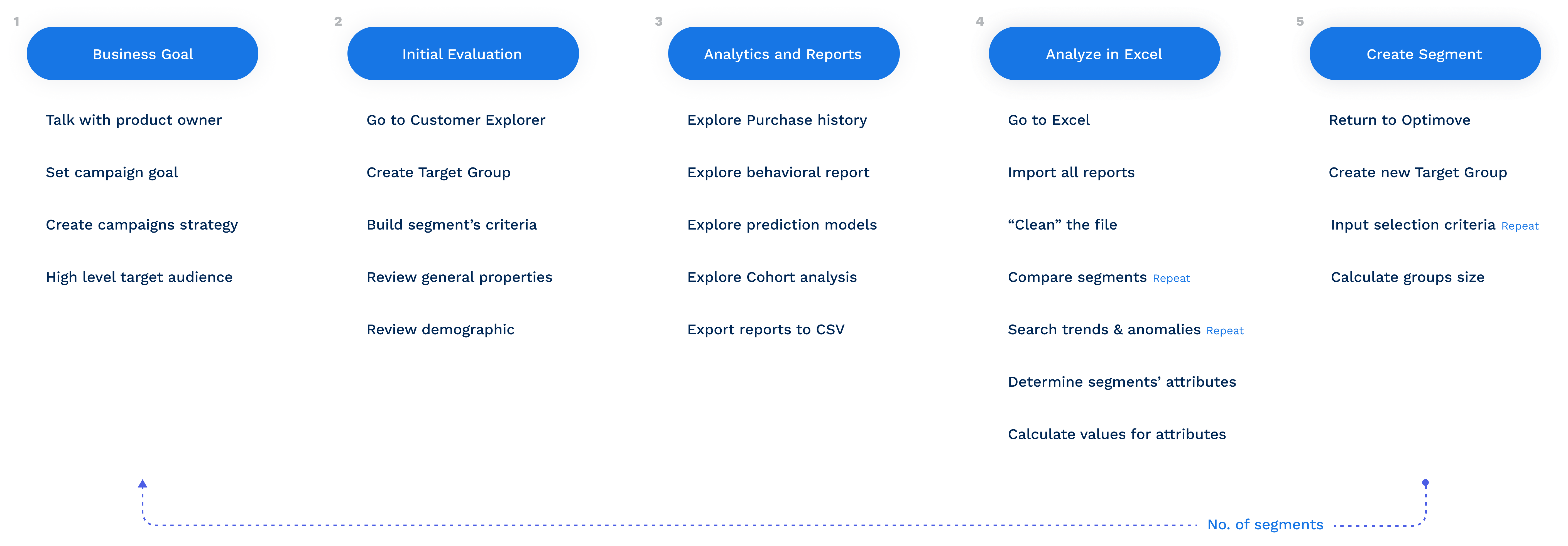
Next step requires exporting the data to Excel, where comprehensive analysis over spreadsheets is conducted to compare groups and identify trends and patterns.
Last, users finalize segments in Optimove requires manually inputting the analyzed attributes one by one, adding effort to the process.
The investigation revealed that users struggled to translate the data within Optimove into actionable insights. The data was scattered across different places, making it hard to identify opportunities. For detailed analysis, they moved the data into Excel and then manually entered the results back into Optimove.
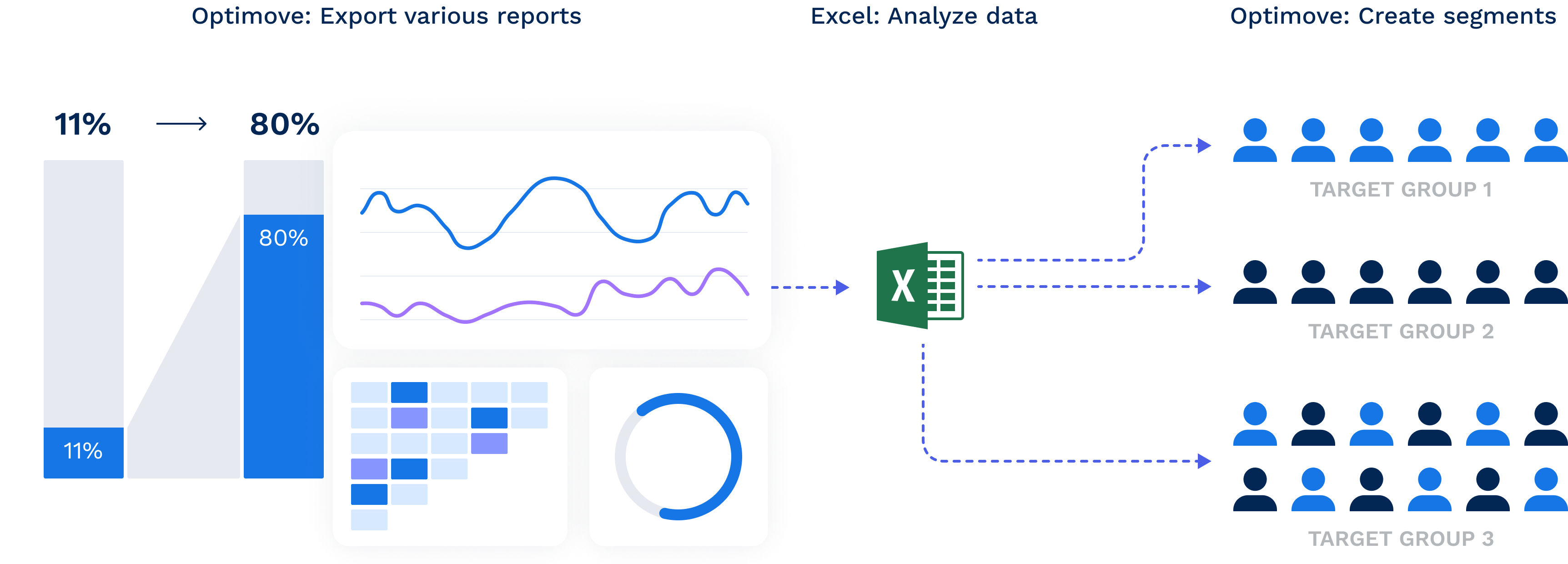
It is problematic because the process was slow, complex and with high effort cost. in addition, many opportunities were lost as the interface failed to surface them.
In the exploration phase, we aimed to create a tool that encourages users to continuously explore the data, enabling them to delve deeper into. We emphasized that the insights must be actionable, ensuring that every piece of data can directly inform their campaign decisions.
One concept, features a chart that maps customer purchase likelihood, guiding users to easily identify and target the segment with the highest potential for conversion.
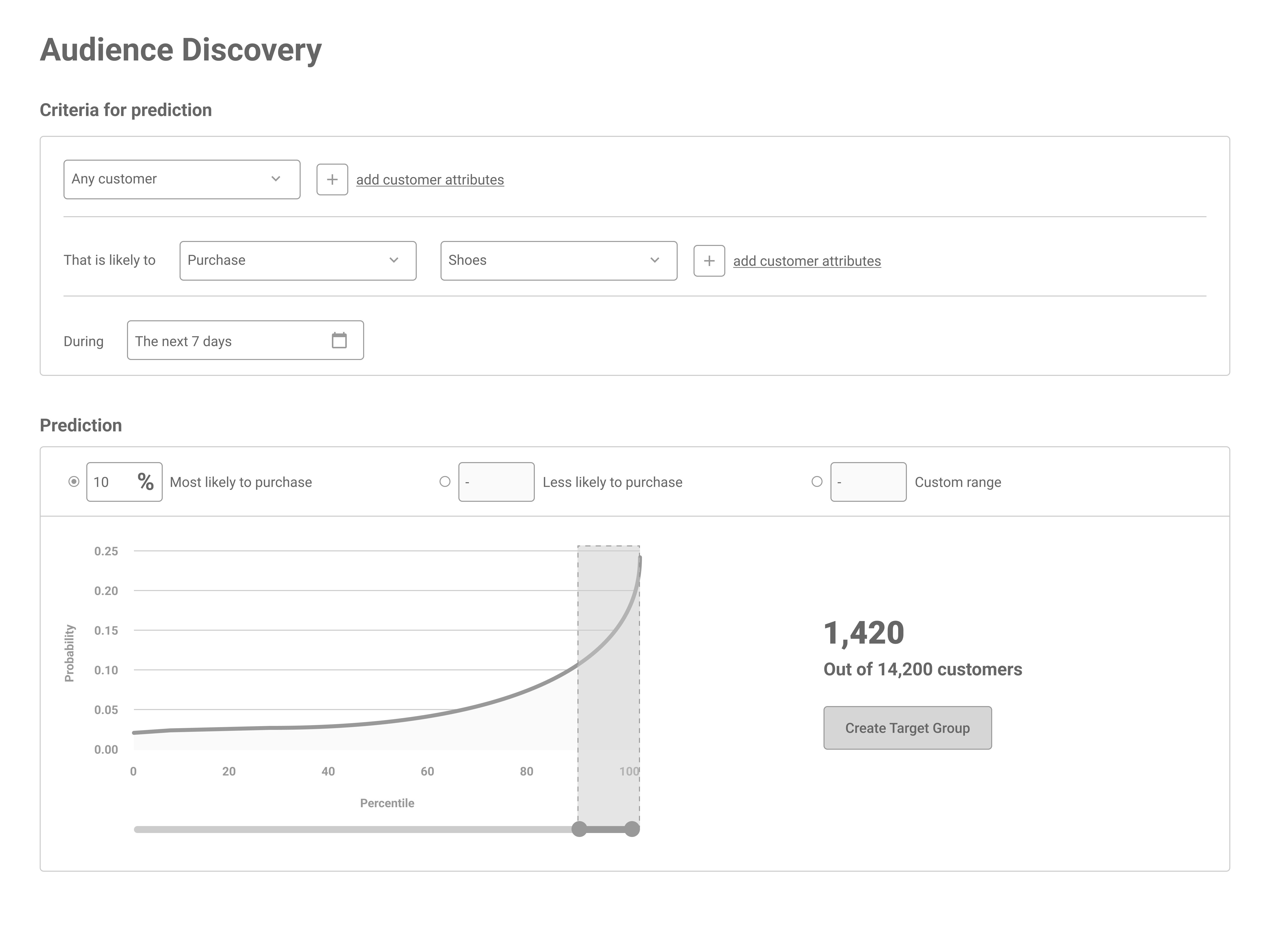
Second concepts, designed to to surface deep insights through the analysis of customer data trends, anomalies, and comparisons.

We chose the concept of a decision tree, allowing granular customer segmentation based on predicted behaviors. This granularity was a key factor in our decision, as it aligns with Optimove’s philosophy of tailored marketing.

Another reason this concept won is that it combines the best features of others— predictive precision and actionable insights — and enables slightly different offerings for each segment, optimizing campaign effectiveness.
The screen offers marketers advanced audience segmentation and in-depth analytical capabilities. It has a decision tree that segments by action likelihood, showing group size and defining attributes.
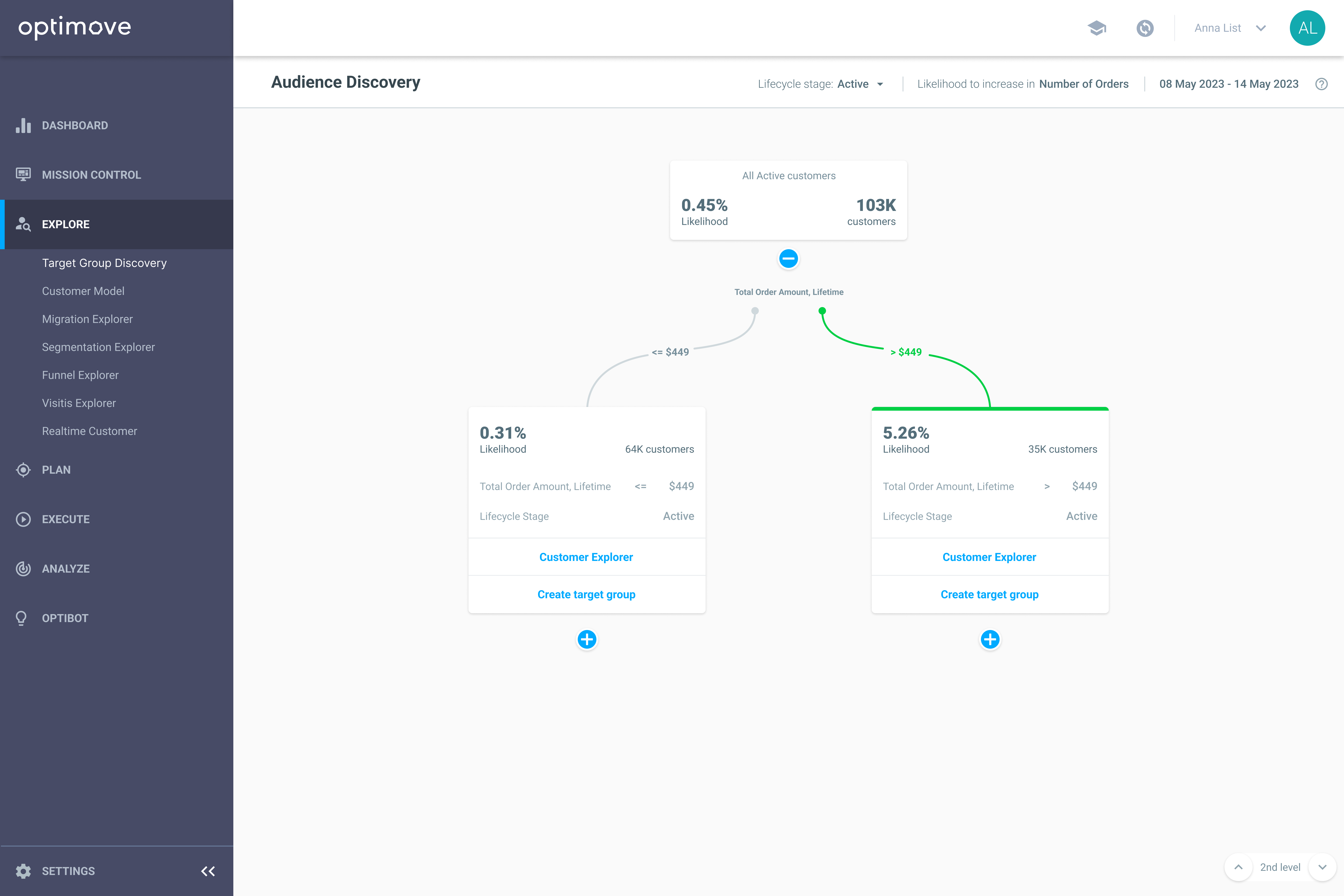
Each card in the AI-driven interface saves time by providing critical data points and inflection points that explain the difference between an audience likely to convert and a group with a low likelihood
The marketers can further divide these segments based on various factors for more granular audiences.
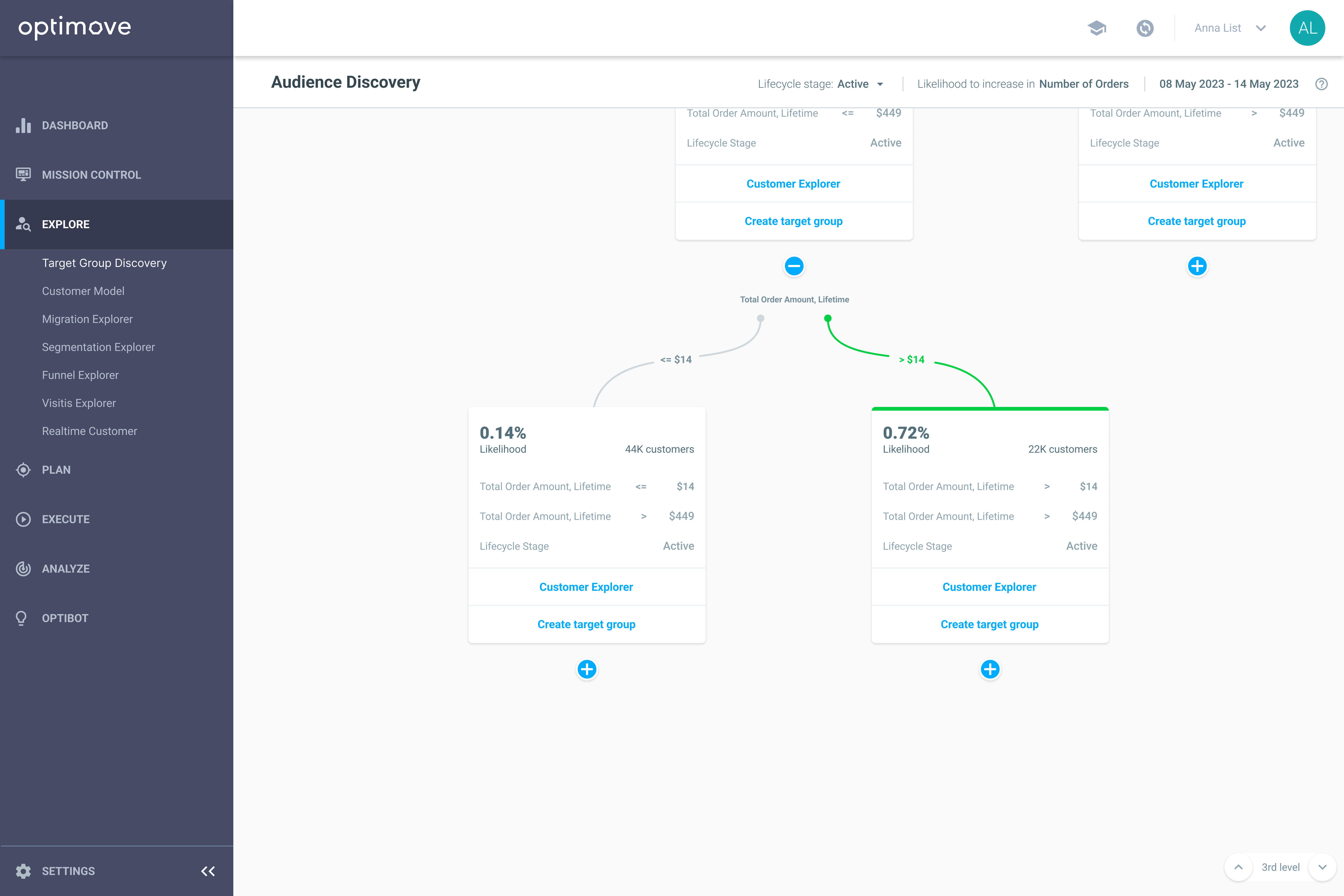
As marketers split segments further, they can tailor their approach based on the likelihood of conversion: engaging highly likely converters with captivating content and targeting less likely converters with more aggressive promotions.
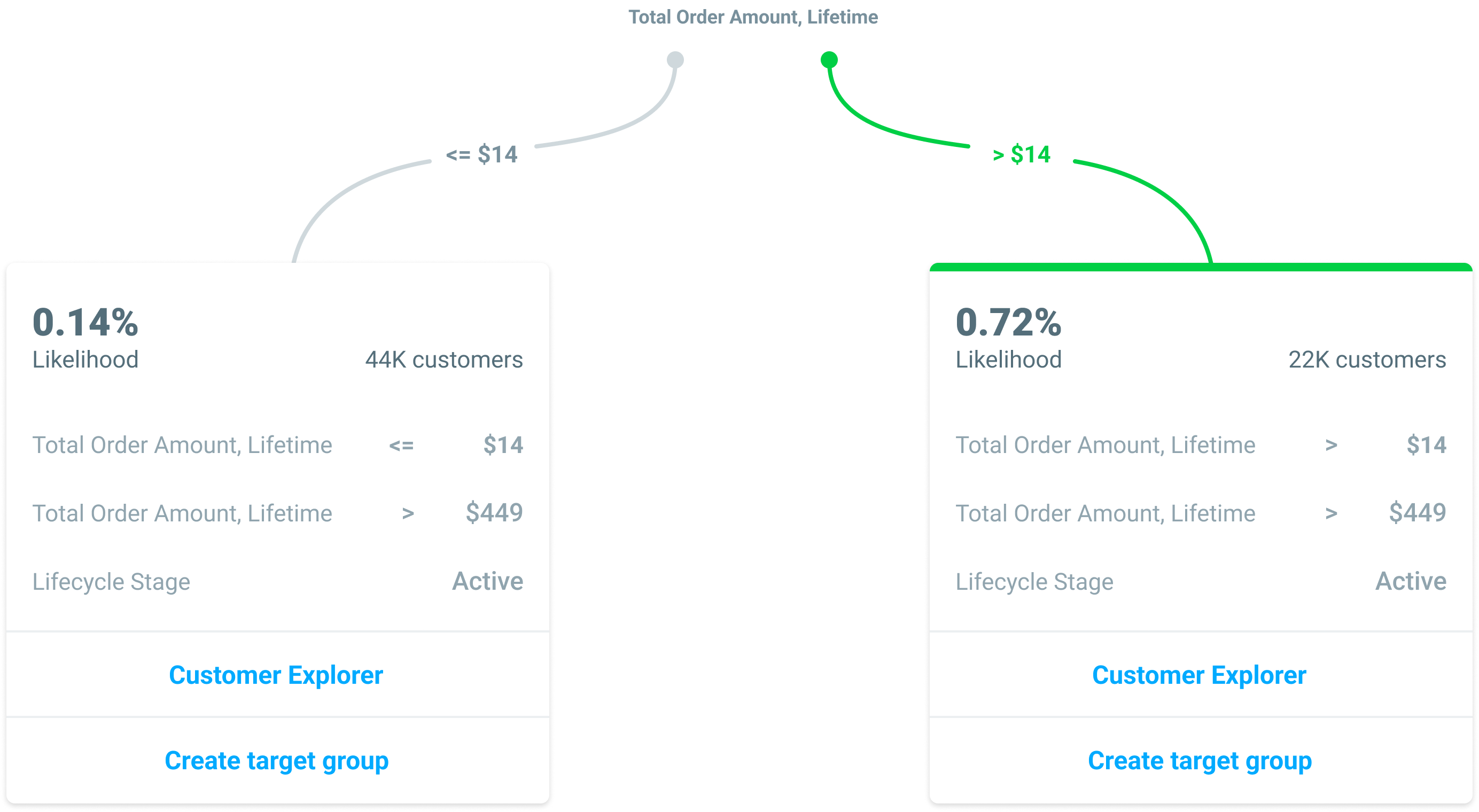
Upon identifying a promising segment, users can explore it further by accessing a detailed drawer. This feature provides trend charts that display the segment's growth over time, alongside additional demographics and purchase behavior.

Additionally, when a user finds a segment he wants to use in his campaigns, the platform streamlines workflow by creating a target group from the same screen, eliminating the need to navigate away.

To evaluate the usability and understandability of the interface, we conducted qualitative usability testing sessions.
Participants had questions about the AI-driven model that the interface failed to address, expressing a lack of trust and understanding. Their questions included what to expect from the screen's functionality, how each audience group was calculated, and the logic behind the groupings
To build trust and improve explainability, we added an introductory screen before the main interface. This screen aims to onboard users by explaining how the AI model works and its value before exploring audience segments. This increased transparency helps build confidence in the AI model.
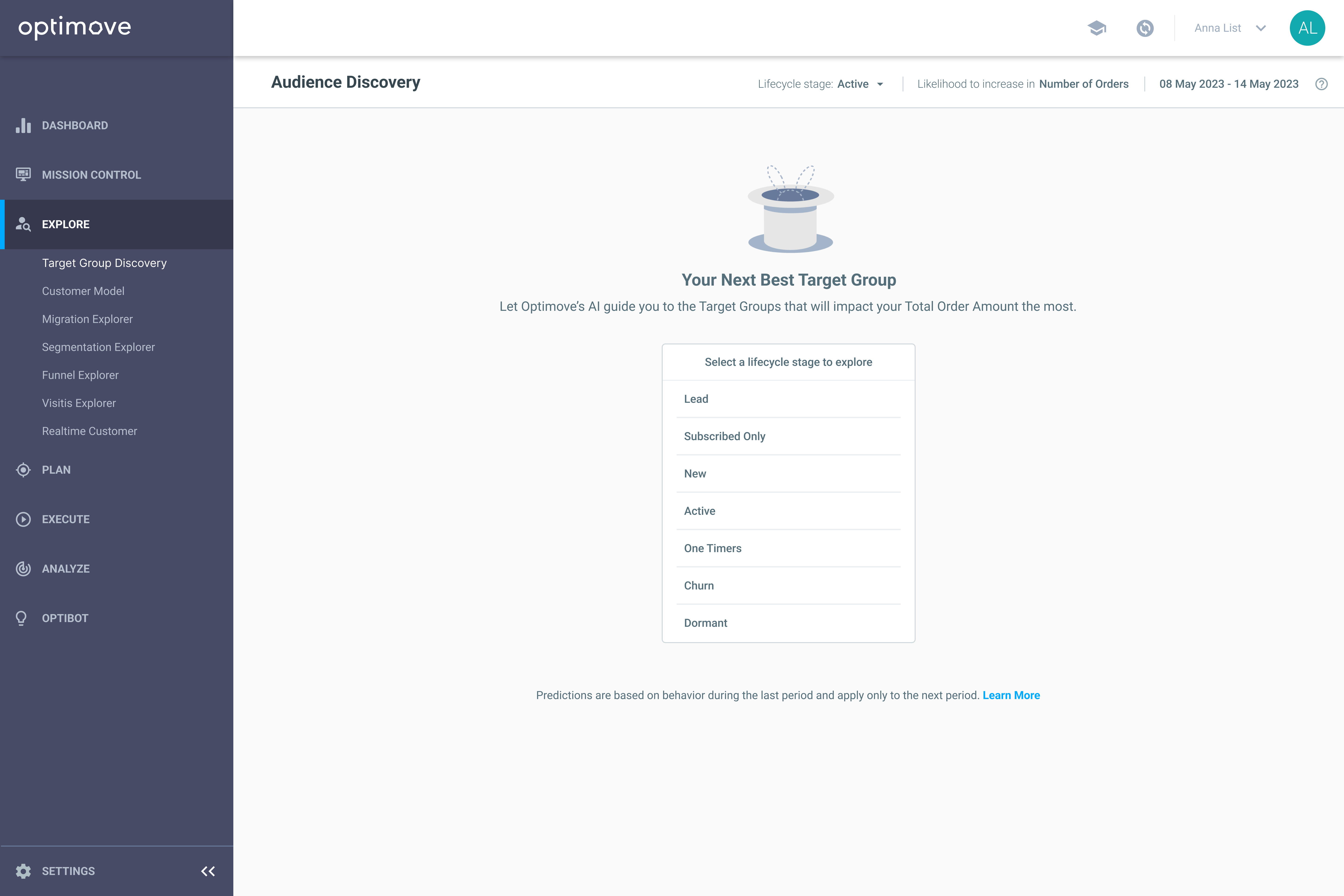
77%
Clients created recommended segments

A significant 77% of clients created segments recommended by our model, demonstrating strong adoption and trust in the predictive targeting tool.
41%
Clients engaged regularly

The new decision tree interface quickly gained traction among our clients. 24% of clients checked the screen at least once a month, and 17% engaged with it on a weekly basis.
x2
Average uplift doubled

Campaigns targeting segments recommended by our model saw a substantial improvement, with the average uplift doubling from 17.4% to 33.1%. This showcases the effectiveness of our AI-driven insights in driving better marketing outcomes.